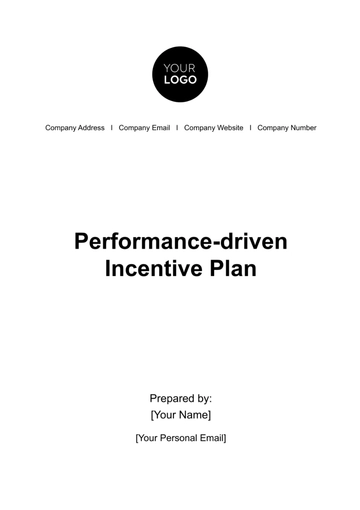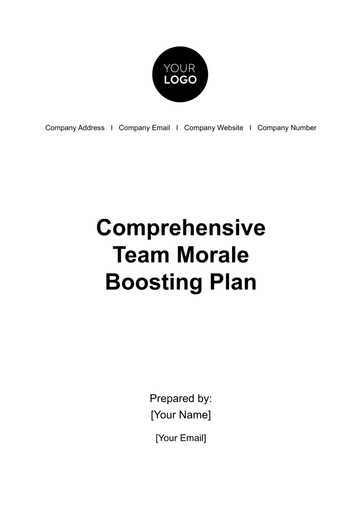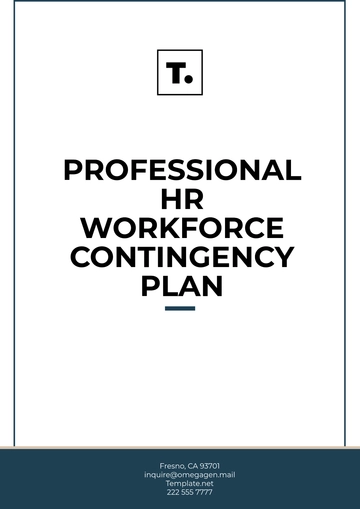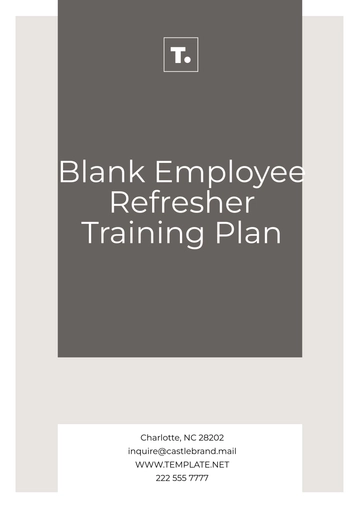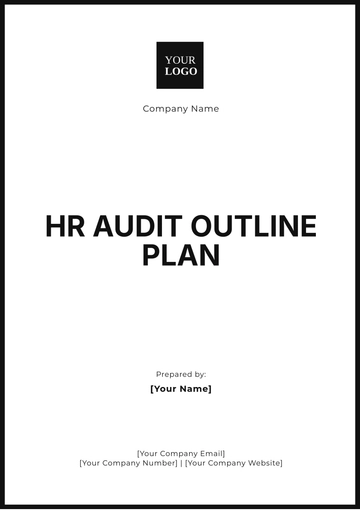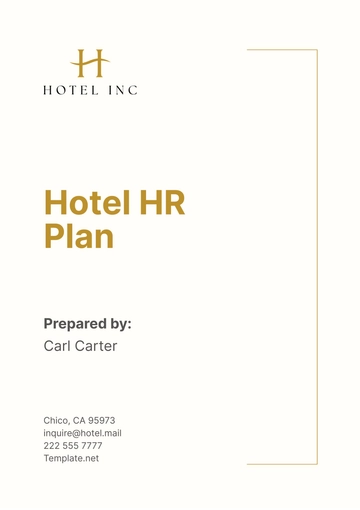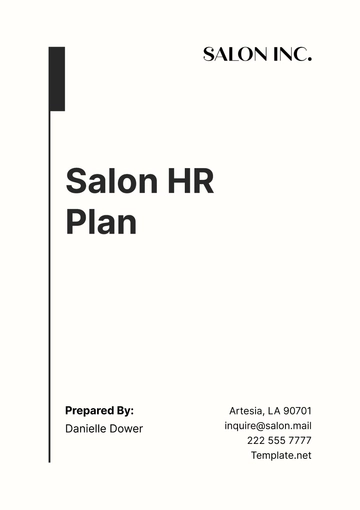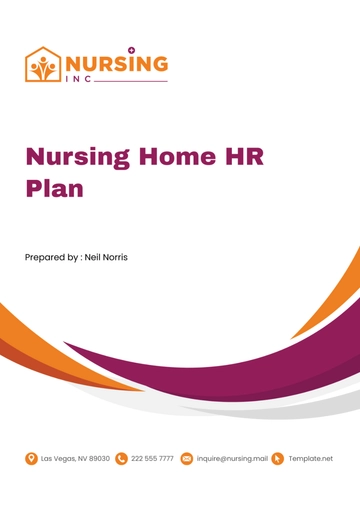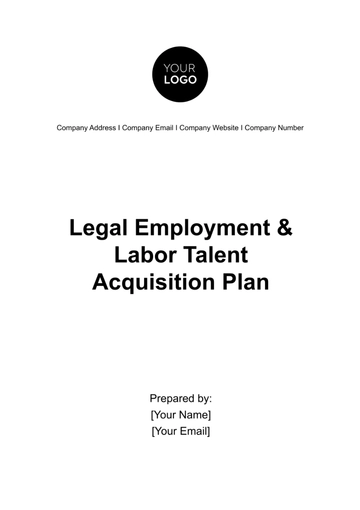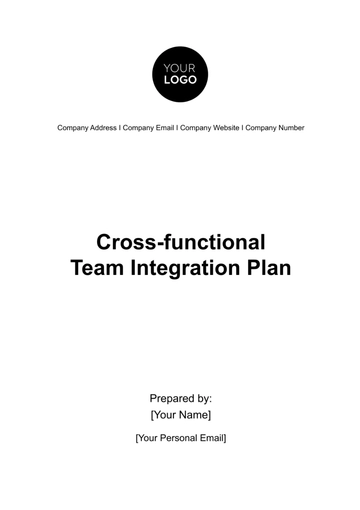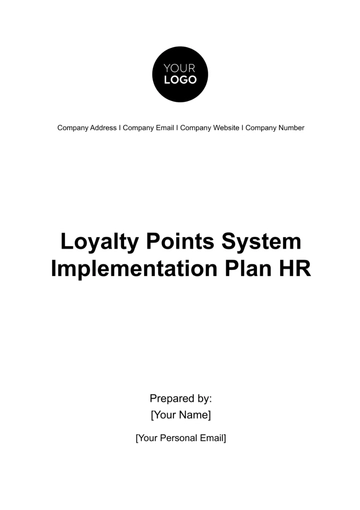Free Employee Stock Purchase Plan (ESPP) Documentation HR
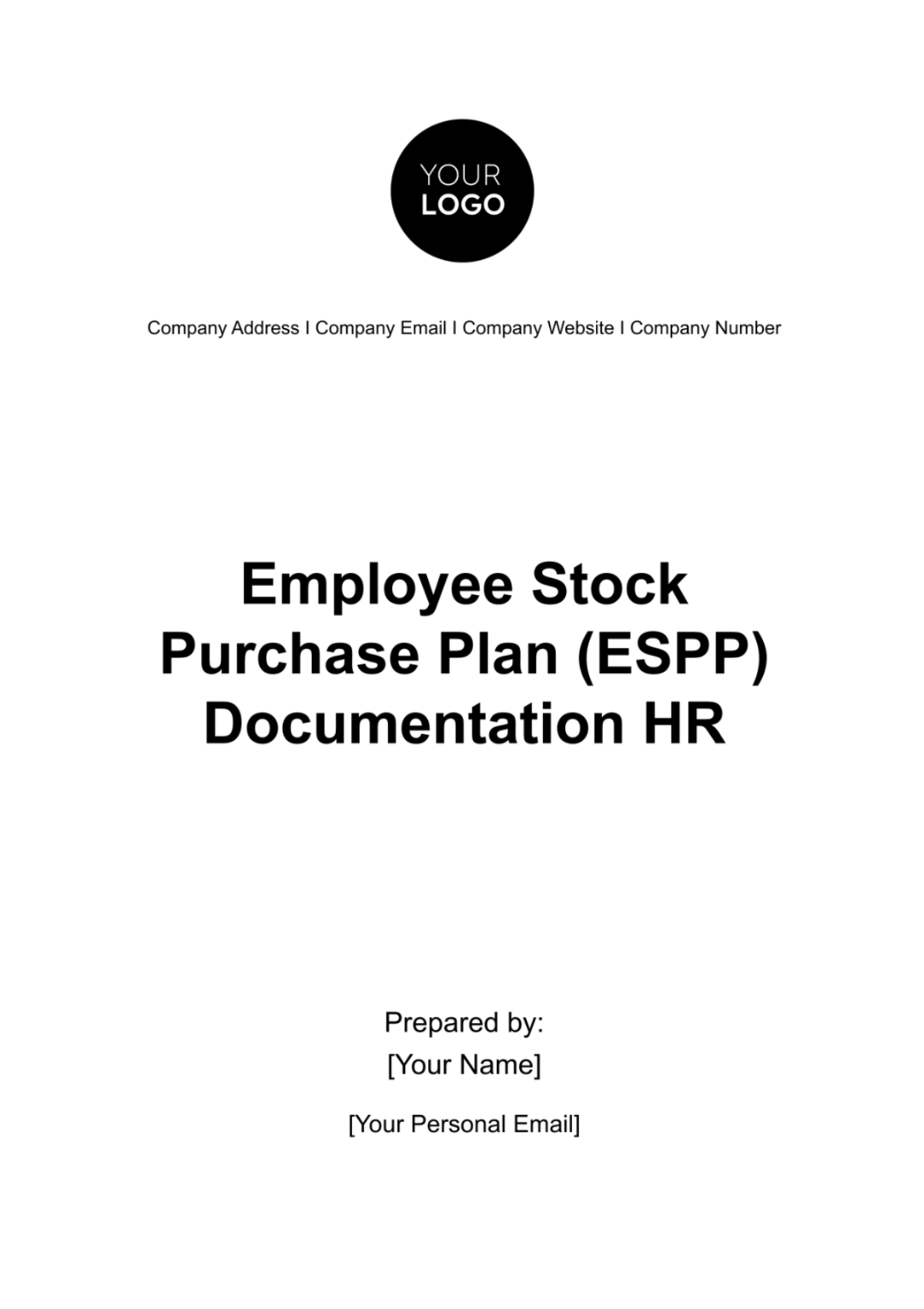
I. Introduction
Welcome to the [Your Company Name] Employee Stock Purchase Plan (ESPP) Documentation. This comprehensive guide serves as a vital resource for understanding and participating in our ESPP. We believe that the employees are the backbone of [Your Company Name], and it's only fitting that you have an opportunity to own a piece of the organization you help build and sustain. Our ESPP is designed to empower you, whether you are a long-term veteran or a new member of our ever-growing team, to become a shareholder in [Your Company Name] and potentially reap financial rewards as the company succeeds.
The ESPP provides a unique avenue for financial growth, allowing you to purchase shares of [Your Company Name] at a discounted rate. This benefit is not merely a perk but a testament to our commitment to fostering a culture of ownership, inclusivity, and shared success. Through this program, you will be able to contribute a percentage of your salary to purchase company shares, usually at a discount, thereby allowing you to build long-term wealth while being intricately involved in the company’s growth journey.
In the following sections, you will find detailed information about eligibility criteria, the enrollment process, features of the ESPP, tax implications, and much more. Should you have any questions or require clarification on any aspect of the program, we've included a comprehensive FAQ section and important contact details for immediate support.
Thank you for your dedication to [Your Company Name]. We are excited about the prospect of you becoming an integral part of our company's future as an employee-shareholder.
II. Eligibility Criteria
Participation in the [Your Company Name] Employee Stock Purchase Plan (ESPP) is a privilege we extend to our dedicated team members. Below are the primary eligibility criteria you must meet to take advantage of this unique opportunity to become a shareholder in [Your Company Name].
Employment Status: Full-Time or Part-Time. One of our guiding principles is inclusivity, and as such, both full-time and part-time employees are eligible for the ESPP. Specifically, you must be working at least 20 hours per week to participate in this program. This approach ensures that a broad array of our talented team members can share in the ownership and success of the company.
Tenure: Minimum Service Requirement. Another crucial eligibility criterion is the length of service with [Your Company Name]. To be eligible for the ESPP, you must have completed at least three months of continuous service. This requirement aims to reward those who have shown commitment and contribution to the company’s objectives and culture.
The aforementioned eligibility criteria are designed to be as inclusive as possible, without compromising the integrity and objectives of the ESPP. These criteria serve to fortify a sense of belonging and ownership among staff members who are making consistent contributions to the collective goals and long-term vision of [Your Company Name].
For any questions or for further clarification on these eligibility criteria, you are encouraged to reach out to our Human Resources department. We are here to guide you through the specifics so that you can make the most of this significant financial benefit.
III. Enrollment Process
We've made the enrollment process for the [Your Company Name] Employee Stock Purchase Plan (ESPP) as straightforward as possible to encourage wide participation. Becoming a part of this program is a rewarding way to invest in your future and the future of the company. Here's how you can enroll:
Online Enrollment:
The most convenient way to enroll in the ESPP is through our online portal, accessible via the [Your Company Website]. Here, you will find the electronic enrollment form, which you can complete and submit with just a few clicks. The online portal is secure, ensuring that all your personal and financial information remains confidential.
Email Request:
Alternatively, you can request an enrollment form by emailing the Human Resources department at [Your Company Email]. After filling out the paper form, you can either scan and email it back or submit it in person, as per your convenience. Once your enrollment form is submitted and approved, you will receive a confirmation email detailing the next steps, including the initiation of payroll deductions and the purchase of company stock.
Documentation:
You may be required to provide certain documents, such as proof of employment and identification, to complete the enrollment process. These requirements are for compliance purposes and to protect the interests of both you and the company.
Support:
Our HR team is always available to guide you through the enrollment process. Whether you have questions about the form, how much you should contribute, or any other aspect of the ESPP, we're here to help.
By providing multiple avenues for enrollment and support throughout the process, we aim to make it easy for every eligible employee to participate in the ESPP. After all, our goal is for you to share in [Your Company Name]'s success.
IV. Features of the ESPP
Feature | Description |
Purchase Frequency | Quarterly |
Discount Rate | 15% |
Maximum Contribution | 10% of salary |
Minimum Contribution | $100 per quarter |
Vesting Period | 1 year |
Lock-in Period | 6 months |
V. Tax Implications
Navigating the tax implications of participating in [Your Company Name]'s Employee Stock Purchase Plan (ESPP) is an essential aspect of maximizing the benefits of the program. As a participant, it's crucial to understand the following key tax considerations:
Post-Tax Contributions: All your contributions to the ESPP come from your net income, meaning they are made after taxes have been deducted from your salary. These contributions are not eligible for pre-tax benefits.
Capital Gains: When you sell the stock that you've acquired through the ESPP, any gains realized will be subject to capital gains tax. The rate at which these gains are taxed depends on how long you've held the stock; short-term and long-term gains are subject to different tax rates according to federal and state regulations.
Tax Withholding: While your contributions are made post-tax, any profit generated from the sale of the stock may also have tax withholding implications. Be sure to understand these aspects to avoid surprises at the time of sale.
Tax Documentation: You will receive tax documentation from [Your Company Name] summarizing your stock purchases and sales, which is required when filing your tax returns.
Professional Advice: Given the complexities involved in tax laws and regulations, it's highly advisable to consult a certified tax advisor for personalized advice. A tax advisor can help you understand how participating in the ESPP will affect your overall tax liability and guide you on optimizing your tax situation.
Being well-informed about these tax considerations will enable you to make the most of the ESPP benefits while complying with all legal requirements.
VI. Selling or Transferring Shares
Participating in [Your Company Name]'s Employee Stock Purchase Plan (ESPP) provides the unique opportunity to invest in the company's stock at a discounted rate. However, selling or transferring these shares comes with its own set of rules and considerations, particularly concerning the lock-in period and the associated tax implications. Here's what you need to know:
Lock-in Period:
Upon the purchase of shares through the ESPP, you'll typically encounter a lock-in period during which you are not allowed to sell or transfer the shares. The length and conditions of this lock-in period can vary, so it's essential to review the specific terms outlined in the ESPP documentation.
Selling After the Lock-in Period:
Once the lock-in period has expired, you're free to sell or transfer your shares. However, you must be cognizant of the tax implications, as the timing of the sale can significantly impact your tax liability.
Tax Penalties for Early Selling:
If you sell your shares immediately after the lock-in period expires, you may incur a higher tax penalty for "disqualifying dispositions." The gains could be subject to ordinary income tax rates rather than the more favorable long-term capital gains rates. The specifics can vary, so consult your tax advisor for guidance tailored to your situation.
Capital Gains Tax:
If you hold the shares long enough to qualify for long-term capital gains, you can benefit from a lower tax rate. The qualifying period and the rate may depend on several factors including your income level and the duration for which the shares were held.
Volatility Risks:
Please be aware that stock markets are inherently volatile. When you decide to sell, the share value could be significantly different from when you initially acquired them. Make sure to assess market conditions and perhaps consult a financial advisor to time your sale wisely.
In summary, while the ESPP offers a fantastic opportunity to own a piece of [Your Company Name], selling or transferring these shares requires careful planning and an understanding of both the program's stipulations and the relevant tax laws. Always consult with financial and tax advisors to make informed decisions.
VII. Termination and Withdrawal
Participating in [Your Company Name]'s Employee Stock Purchase Plan is a valuable benefit, but there may be times when you need or wish to terminate your participation or withdraw your accumulated contributions. Understanding how to properly navigate these options will help ensure you make the most of your benefits while avoiding potential pitfalls. Below are some key considerations:
Annual Withdrawal Period:
[Your Company Name] provides an annual withdrawal period, usually specified in your ESPP documentation, during which you can opt out of the plan. If you choose to withdraw, your accumulated contributions would be returned to you without interest, and you would no longer be able to purchase shares at the discounted rate for that particular offering period.
Termination Due to Employment Status:
If you leave [Your Company Name], whether due to resignation, retirement, or termination, your participation in the ESPP will typically end automatically. Your contributions up to that point will either be used to purchase shares, if the purchase period is near, or be returned to you, depending on the plan's terms.
Prorated Benefits:
In some cases, if your employment is terminated close to a stock purchase date, you may still be eligible for prorated benefits, allowing a final purchase of shares based on the contributions you've made during your tenure. Consult the ESPP documentation or HR department for more information.
Re-Enrollment:
If you withdraw during the annual period but later decide you'd like to rejoin, you'll need to wait until the next enrollment period to opt back in. This could mean missing out on potential gains, so weigh your options carefully.
Tax Implications:
Withdrawal from the plan or termination of employment may have tax implications, especially if you've already used your contributions to purchase shares. Consult a tax advisor to understand the tax consequences associated with withdrawing from the ESPP or terminating your employment.
In summary, terminating your participation in [Your Company Name]'s ESPP is a decision that should not be taken lightly. Whether you're considering opting out during the annual withdrawal period or are facing changes in your employment status, it's crucial to understand the rules, regulations, and implications of your actions. Always consult your ESPP documentation and seek professional advice for personalized guidance.
VIII. FAQs
How do I change my contribution?
Changing your contribution amount to the Employee Stock Purchase Plan (ESPP) is typically a straightforward process, but there may be certain timelines or restrictions based on [Your Company Name]'s specific policies. Usually, you can change your contribution percentage during the open enrollment periods through the HR portal or by submitting a form to the HR Department. Keep in mind that any changes will be effective from the next contribution period, not immediately. If you want to change your contribution amount outside the designated periods, consult the HR department or your ESPP documentation to understand the options available to you. Please note that excessive changes to your contribution amounts within a short time frame may be subject to review and could be restricted per company policy.
What happens to my shares if I leave [Your Company Name]?
If you decide to leave [Your Company Name], your participation in the ESPP generally ends. What happens to your shares and accumulated contributions will depend on the specific rules outlined in your ESPP documentation. Generally speaking, if you are close to a stock purchase date, your contributions up to that point might be used to buy shares. Otherwise, your contributions are usually returned to you without interest. If you've already purchased shares, those shares typically become fully yours to hold, sell, or transfer as you wish. However, the selling or transferring could have tax implications, especially if done within a specified time after the purchase. It is highly advisable to consult both your ESPP documentation and a tax advisor to understand your options and responsibilities when leaving [Your Company Name].
IX. Appendix
ESPP Policy of [Your Company Name]
The Employee Stock Purchase Plan (ESPP) of [Your Company Name] aims to offer eligible employees the opportunity to purchase shares at a discounted rate. Participants can contribute a percentage of their salary, post-tax, to purchase shares. The plan operates on 6-month cycles, starting January 1 and July 1 each year. Participants are allowed to change their contribution percentage during the open enrollment period. They are also allowed to withdraw from the plan during the annual withdrawal period or upon employment termination. The shares are purchased at a discount of 15% from the market price on either the first or last day of the 6-month cycle, whichever is lower.
Sample Calculation Formulas
Parameter | Formula | Description |
Maximum Contribution | (Annual Salary x Maximum Contribution %) / Number of Periods | Determines the maximum amount an employee can contribute each period. |
Purchase Price | Market Price x (1 - Discount Rate) | The price at which shares are purchased, taking the discount into account. |
Number of Shares | Total Contributions / Purchase Price | Total number of shares an employee can buy with the accumulated contributions. |
Capital Gain | (Selling Price - Purchase Price) x Number of Shares | The profit made from selling the shares. |
Tax on Capital Gain | Capital Gain x Capital Gain Tax Rate | Amount of tax due on the profit made from selling the shares. |
Notes:
The formulas are for illustrative purposes only. Please consult the ESPP documentation and a financial advisor for personalized calculations.
Capital gains may be subject to both federal and state taxes, and the tax rate may vary based on the holding period.
The company reserves the right to make changes to the ESPP policies and these formulas at any time. Please keep yourself updated by regularly checking [Your Company Website] or contacting [Your Company Email].
X. Contact Information
For any questions, clarifications, or issues related to the Employee Stock Purchase Plan (ESPP), please don't hesitate to reach out to the appropriate department or personnel. Our dedicated team is here to assist you throughout your participation in the plan, from enrollment to selling or transferring shares.
HR Department
Email: [Your Company Email]
Phone: [Your Company Phone Number]
The Human Resources Department is your first point of contact for general inquiries about eligibility criteria, enrollment processes, and other administrative concerns related to the ESPP.
ESPP Coordinator
Name(s): [Name]
Job Position: [Job Position]
Personal Email: [Personal Email]
Phone: [User Phone]
For specific questions about how the ESPP functions, its policies, or how it fits into your overall compensation and benefits package, the ESPP Coordinator is your go-to resource.
Please note that office hours for phone consultations are from 9:00 AM to 5:00 PM, Monday through Friday. Emails are generally responded to within two business days. Should you need urgent assistance, make sure to mark your email as 'Urgent' in the subject line for quicker response.
- 100% Customizable, free editor
- Access 1 Million+ Templates, photo’s & graphics
- Download or share as a template
- Click and replace photos, graphics, text, backgrounds
- Resize, crop, AI write & more
- Access advanced editor
Unlock the full potential of your Employee Stock Purchase Plan (ESPP) with the ESPP Documentation HR Template from Template.net. This editable and customizable template streamlines your ESPP administration process. Harness the power of our AI Editor Tool to tailor the documentation to your company's needs. Simplify compliance and communication effortlessly with this comprehensive solution.
You may also like
- Finance Plan
- Construction Plan
- Sales Plan
- Development Plan
- Career Plan
- Budget Plan
- HR Plan
- Education Plan
- Transition Plan
- Work Plan
- Training Plan
- Communication Plan
- Operation Plan
- Health And Safety Plan
- Strategy Plan
- Professional Development Plan
- Advertising Plan
- Risk Management Plan
- Restaurant Plan
- School Plan
- Nursing Home Patient Care Plan
- Nursing Care Plan
- Plan Event
- Startup Plan
- Social Media Plan
- Staffing Plan
- Annual Plan
- Content Plan
- Payment Plan
- Implementation Plan
- Hotel Plan
- Workout Plan
- Accounting Plan
- Campaign Plan
- Essay Plan
- 30 60 90 Day Plan
- Research Plan
- Recruitment Plan
- 90 Day Plan
- Quarterly Plan
- Emergency Plan
- 5 Year Plan
- Gym Plan
- Personal Plan
- IT and Software Plan
- Treatment Plan
- Real Estate Plan
- Law Firm Plan
- Healthcare Plan
- Improvement Plan
- Media Plan
- 5 Year Business Plan
- Learning Plan
- Marketing Campaign Plan
- Travel Agency Plan
- Cleaning Services Plan
- Interior Design Plan
- Performance Plan
- PR Plan
- Birth Plan
- Life Plan
- SEO Plan
- Disaster Recovery Plan
- Continuity Plan
- Launch Plan
- Legal Plan
- Behavior Plan
- Performance Improvement Plan
- Salon Plan
- Security Plan
- Security Management Plan
- Employee Development Plan
- Quality Plan
- Service Improvement Plan
- Growth Plan
- Incident Response Plan
- Basketball Plan
- Emergency Action Plan
- Product Launch Plan
- Spa Plan
- Employee Training Plan
- Data Analysis Plan
- Employee Action Plan
- Territory Plan
- Audit Plan
- Classroom Plan
- Activity Plan
- Parenting Plan
- Care Plan
- Project Execution Plan
- Exercise Plan
- Internship Plan
- Software Development Plan
- Continuous Improvement Plan
- Leave Plan
- 90 Day Sales Plan
- Advertising Agency Plan
- Employee Transition Plan
- Smart Action Plan
- Workplace Safety Plan
- Behavior Change Plan
- Contingency Plan
- Continuity of Operations Plan
- Health Plan
- Quality Control Plan
- Self Plan
- Sports Development Plan
- Change Management Plan
- Ecommerce Plan
- Personal Financial Plan
- Process Improvement Plan
- 30-60-90 Day Sales Plan
- Crisis Management Plan
- Engagement Plan
- Execution Plan
- Pandemic Plan
- Quality Assurance Plan
- Service Continuity Plan
- Agile Project Plan
- Fundraising Plan
- Job Transition Plan
- Asset Maintenance Plan
- Maintenance Plan
- Software Test Plan
- Staff Training and Development Plan
- 3 Year Plan
- Brand Activation Plan
- Release Plan
- Resource Plan
- Risk Mitigation Plan
- Teacher Plan
- 30 60 90 Day Plan for New Manager
- Food Safety Plan
- Food Truck Plan
- Hiring Plan
- Quality Management Plan
- Wellness Plan
- Behavior Intervention Plan
- Bonus Plan
- Investment Plan
- Maternity Leave Plan
- Pandemic Response Plan
- Succession Planning
- Coaching Plan
- Configuration Management Plan
- Remote Work Plan
- Self Care Plan
- Teaching Plan
- 100-Day Plan
- HACCP Plan
- Student Plan
- Sustainability Plan
- 30 60 90 Day Plan for Interview
- Access Plan
- Site Specific Safety Plan
